Seeking sustainable caviar at Michelin-starred restaurants in Singapore
Caviar is one of the world’s most expensive foods. Procured from female sturgeons, the roe was first consumed by Persians who believed that the tiny eggs could boost one’s vitality.
Caviar soon found its way into Russian courts with tsars serving this delicacy at their lavish royal banquets (in fact, according to author Niki Segnit, the children of tsars used to start their mornings with a sumptuous dish of mashed banana and caviar). The Russians’ fondness for caviar soon saw it becoming a global player in caviar cultivation around the 18th century under the reign of Peter the Great. The emperor’s Europe-oriented mindset saw him establishing networks for exporting Russia’s caviar to the rest of Europe which too, had started to develop a taste for caviar.
Russia didn’t remain the only country to have a monopoly over caviar. In the early 19th century, the waters of America were discovered to be teeming with sturgeon, so much so that caviar was even being given away for free in bars. A German businessman, Henry Schacht, capitalised on this to establish a thriving caviar business in 1873, even re-exporting American caviar back to Europe. While caviar wasn’t initially seen as a luxury item by either the Russians or Americans, overfishing eventually led to a sky rocketing of caviar prices, and over time, these eggs became a luxury good globally.
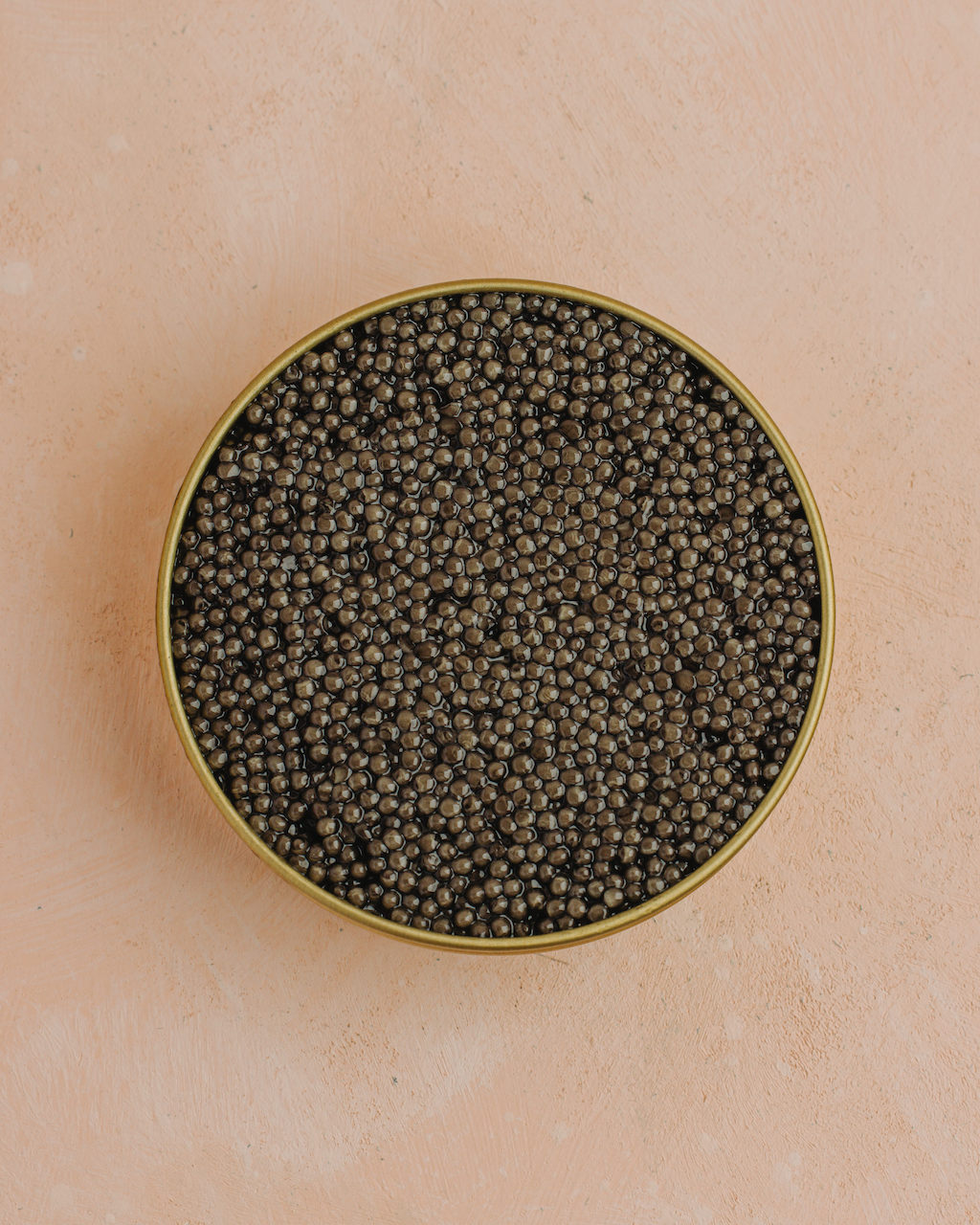
The effects of overfishing wild sturgeon continue to linger till today. A recent assessment by The International Union for Conservation of Nature (IUCN) has listed two thirds of all sturgeons as being critically endangered. This makes the sturgeon, a prehistoric fish that has been around since the time of dinosaurs, now among the world’s most threatened species.
Despite this, the world’s appetite for caviar hasn’t slowed down even as countries around the world have banned sturgeon fishing. As a solution, farmed caviar emerged in the market in the early 2000s.
On top of sidestepping the overfishing of wild sturgeons, farmed caviar is also much more consistent in quality and taste. The diet of wild sturgeon varies day to day, which can produce caviar that’s highly complex in flavour — but that’s also potentially inconsistent. On the other hand, the controlled diet of farmed sturgeons eliminates this problem.
The use of technology in farmed caviar also guarantees a higher success rate for extracting perfect roe. A mature female sturgeon (typically around seven to 10 years old) will be scanned with a high-frequency ultrasound to evaluate its egg production levels — sturgeons not at their peak will be returned to the pool until its eggs are ready for harvest.
And while caviar is typically obtained by killing the sturgeon and stripping its ovaries, some farmed caviar is obtained through C-section (the ovaries are stitched up after the eggs are obtained), or through “milking”, a method that sees a small incision made and the eggs massaged out of the sturgeon.
The latter two methods allow the sturgeon to continue producing roe even after its eggs have been collected, a more productive option for caviar companies than the former.
The tides have also turned with regard to caviar origins. Today, China, Italy, and France have emerged as the top producers of farmed caviar. China alone produces approximately 60 percent of the world’s farmed caviar in the man-made Qiandao lake in Zhejiang, which is located along the south-eastern coast of China.
Most recently, the nascent cell-based food sector has also started exploring creating caviar through cellular agriculture. With this technology, cells will be procured from sturgeon roe, and then cultivated in a bioreactor. Should this technology be feasible, roe can be grown without sturgeons, at scale, and in a manner that’s completely traceable (counterfeit caviar continues to be a problem in the industry). While this technology is still in its infancy with just a handful of companies tackling the task, the prospects are certainly exciting.
If you’re looking to add a spoonful — or two — of conscious indulgence this festive season, here’s where you can enjoy sustainably farmed caviar in Singapore’s Michelin-starred restaurants.
Caviar And Vegetables
At Chef Jason Tan’s one-Michelin-starred Euphoria, the opulent caviar finds a surprisingly perfect pairing with the humblest of ingredients: onions. Tan’s signature dish, the Oignon Jamboree, which sees the allium served up in five different ways and layered together, is topped off with a generous mound (12 grams to be exact) of Kaviari Oscietra Prestige Caviar. “The dish is not seasoned with salt, so the caviar provides a brininess and saltiness to balance [the dish’s] sweetness, acidity, and smokiness,” Tan says.
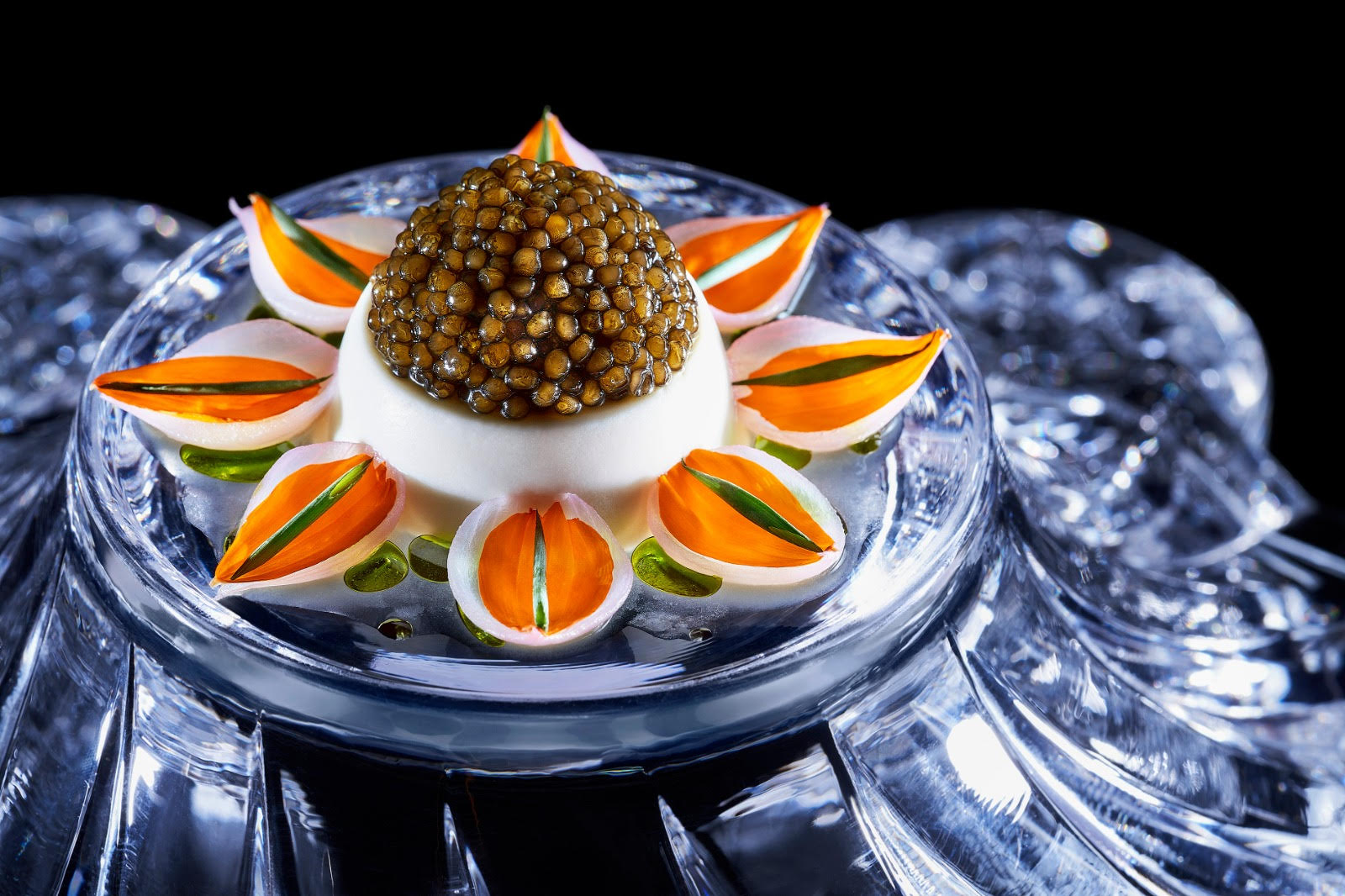
Tan is of the opinion that nothing can quite replace the complex, briny flavours of caviar, which is why he has taken great pains to source what he believes is the best caviar out there. The chef uses caviar from Maison Kaviari, whose caviar roe comes from farms around the world before being aged in their Paris-based facility.
Caviar And Meat
Also playfully contrasting the humble and luxurious is Braci’s ‘Ricchi e Poveri’. Translating to ‘Rich and Poor’, this bite-sized snack sees pork trotter and borlotti beans piped into a delicate potato cannolo and topped off with a line of caviar.
Chef de cuisine Matteo Ponti explains his dish: “This snack showcases two food cultures from north Italy. In the countryside, a popular dish among the less privileged was a pork trotter salad with beans and onions. On the other side, the Po River used to have a lot of sturgeons, so caviar was popular [but] exclusively savoured by the upper class. With this snack, diners get to experience both culinary worlds in our little cannolo. The texture and body provided by the pork trotters elevate the unique iodine flavour of the caviar.”
The one-Michelin-starred Italian fine dining restaurant sources its Superior Oscietra caviar from 8 Gems, whose farms are located in China. The caviar comes from the Amur-Kaluga sturgeon hybrid, whose amber eggs boast a buttery and nutty flavour.
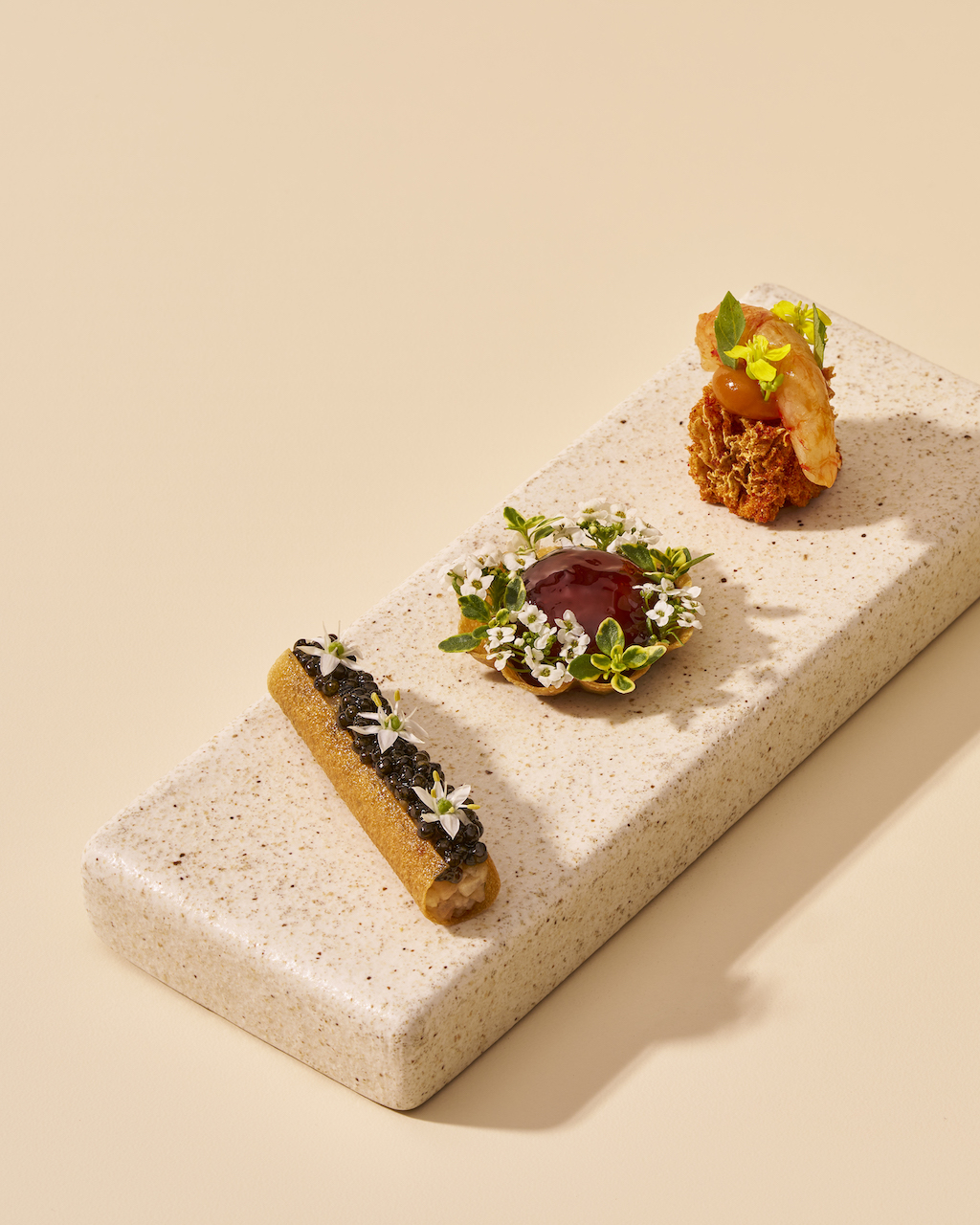
Caviar With Egg
A truly luscious combination, there’s nothing quite like doubling up on eggy goodness with a caviar-and-egg pairing. Perfectly fitting for an indulgent year-end celebration, three- Michelin-starred Zén’s menu will see the return of a classic crowd-favourite: Caviar served with silky chawanmushi and accompanied by a smoky 100-days aged smoked pork belly dashi. Nutty, smoky, bright, and creamy all at once, this is a dish that manages to intrigue the palate while being simultaneously comforting.
Key to the elegant flavours is the caviar. Zén’s caviar comes from N25, a Munich-based producer whose sturgeons are raised in pure spring water at an altitude of over 2,000 metres.
Hermes Gehnen, [N25’s] founder, collaborated with Bjorn Frantzén to curate a special [caviar] recipe. This recipe uses the oldest sturgeons, as they have the highest fat content and ageing potential. The caviar undergoes an ageing process of four to five months, which brings out a strong umami and elegant, floral, and nutty notes.
Caviar With Seafood
For many chefs, seafood and caviar are a match made in heaven. Julien Royer chef-owner of Odette compares it to a “celebration of the bounty of the ocean”. One of his signature caviar dishes is married with sea urchin, Sicilian prawn, and mussel foam.
“The caviar, paired with the various seafood, really helps to bring out the sweetness and inherent savouriness of the [other] ingredients,” Royer explains. He adds that sometimes certain vegetables like white asparagus and beetroot go amazingly with caviar as the vegetables’ nuttiness and earthiness are a wonderful complement to the caviar’s umami.
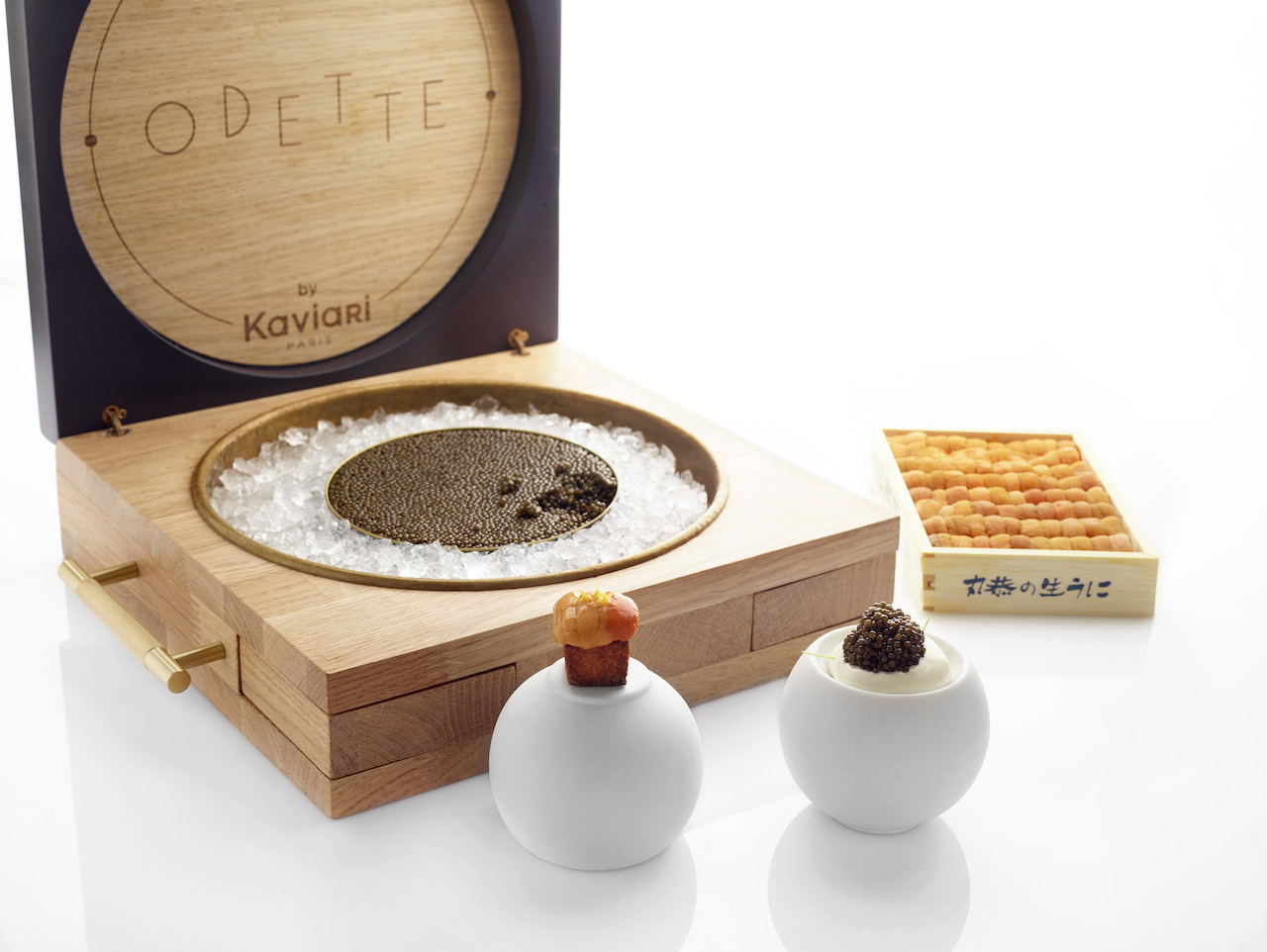
The three-Michelin-starred restaurant uses a selection of caviar from Maison Kaviari, namely their Kristal, Oscietra, and Daurenki caviar. Royer has been working with Kaviari for almost 15 years. “So they know exactly what I’m looking for – low level of salt, big grain and golden colour. This caviar is farmed in China, which is actually the largest producer of caviar in the world now. Most Chinese caviar production takes place in Qiandaohu, Zhejiang, Hangzhou province and the Thousand Lakes region.”
The Kristal caviar is known for its clean, savoury, and nutty finish, while its large grain size adds a pop of grandeur to any dish. “I also appreciate that [its] salt content is not too aggressive, which is more suitable for the palates in Asia,” Royer notes.
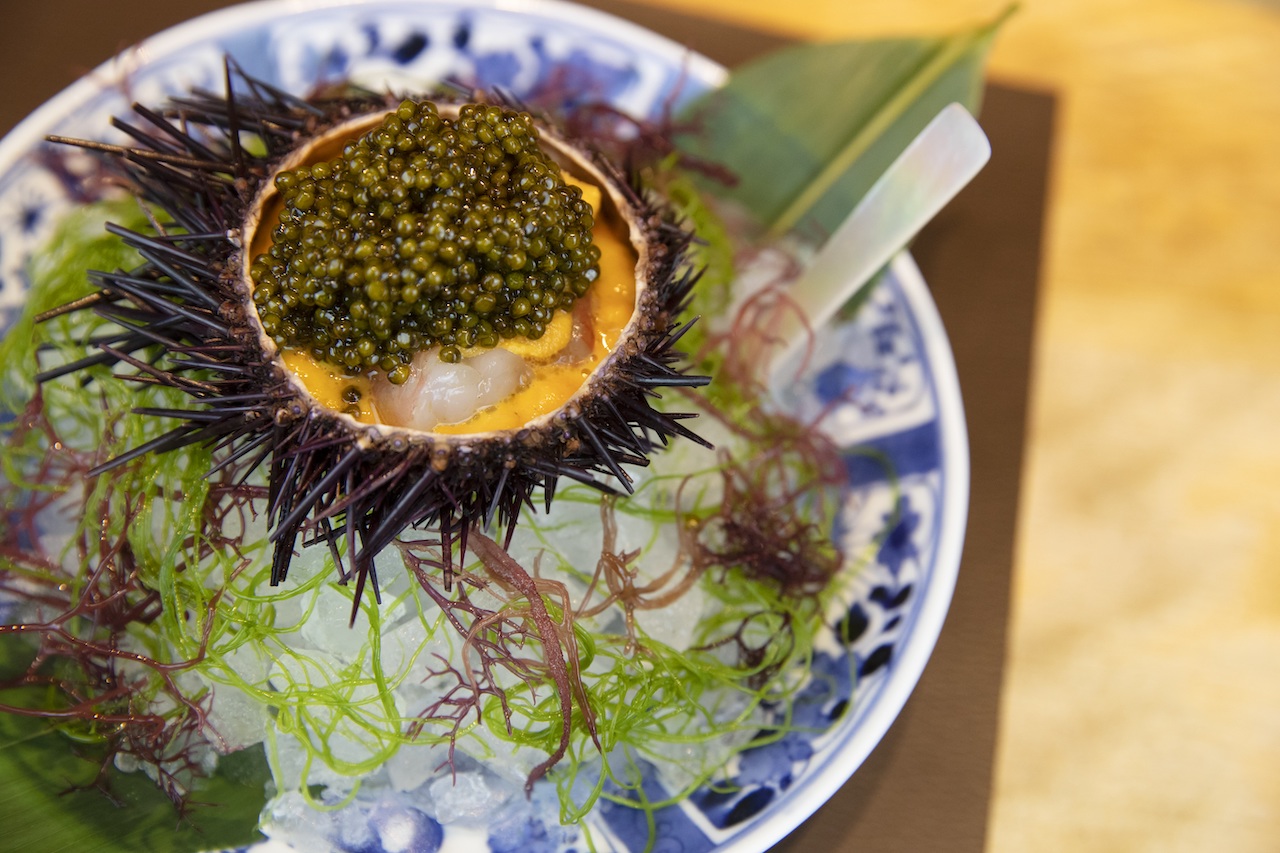
Waku Ghin too, amps up the luxe factor with sea urchin and caviar. A standout dish at the restaurant is its Marinated Botan Shrimp with Sea Urchin and Kristal Caviar. A finishing spoonful of Kristal caviar, also from Maison Kaviari, adds a divine touch to this creamy, umami delight.
At the restaurant, guests are encouraged to enjoy the caviar on its own before mixing it with the other ingredients. “They are often surprised and blown away by the complex and rich flavours of the caviar, which boast a good balance of saltiness and fragrance,” Chef Tetsuya Wakuda notes.
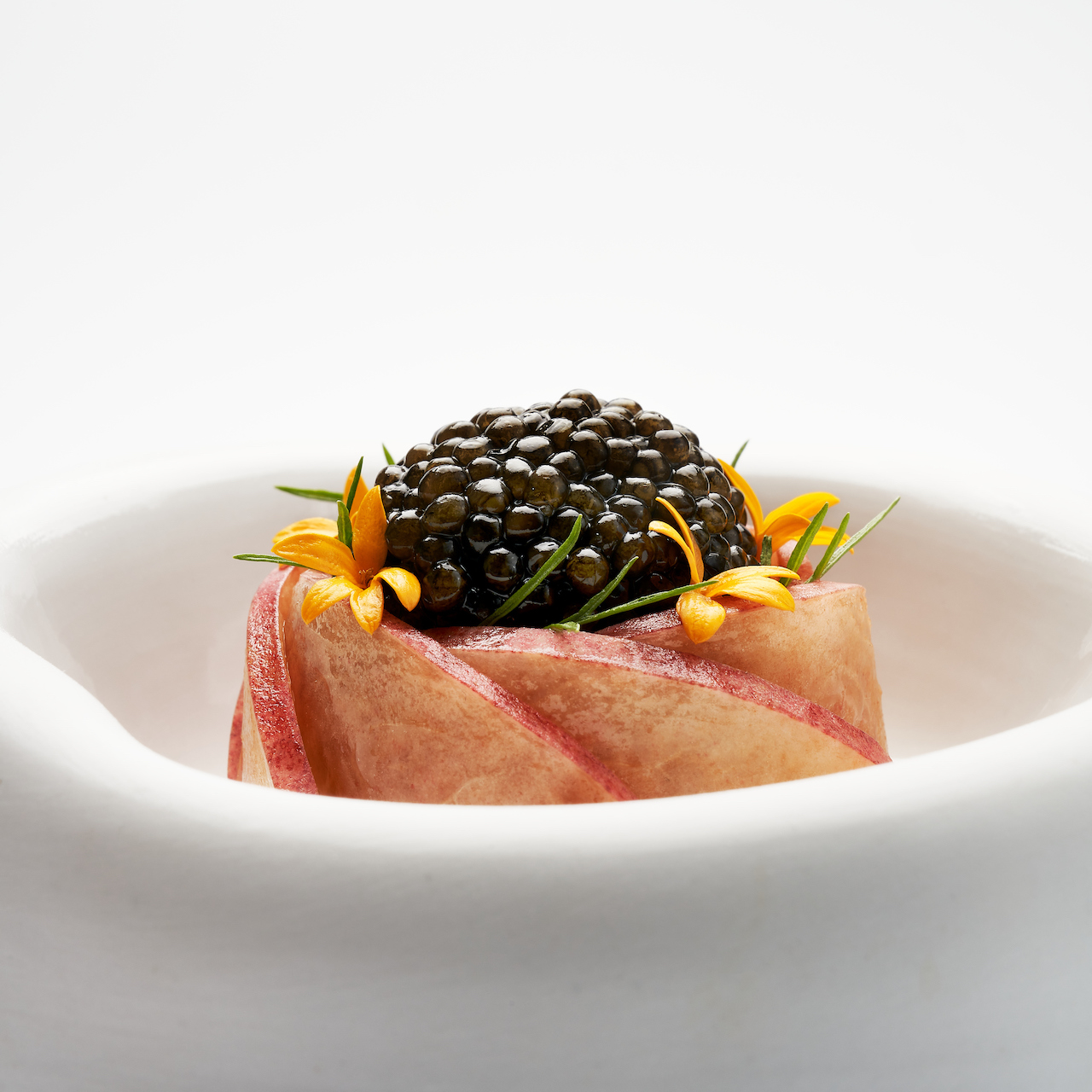
Over at Art di Daniele Sperindio, this modern Italian restaurant will treat diners to a caviar graced version of Cappon Magro, a traditional Genovese dish that usually combines seafood, cooked leafy vegetables, and eggs. Art’s cold amuse bouche instead replaces the egg with caviar and pairs it alongside steamed scampi, fresh pear, and emulsified crab milk for an elegant take on the classic.
Other new seafood creations with caviar include Art’s new dish – Sanremo – which consists of earthy black rice jelly, complemented by zesty lemon and velvety white onion cream. The Sanremo prawn is cubed into smaller pieces in order to retain a delicate crunchiness and then topped with Kaluga caviar, offering a harmonious balance of oceanic flavours. The preparation concludes with a delicate wrapping of peach infused with wild flowers tea, providing a refreshing and satisfying finish with lingering floral notes.
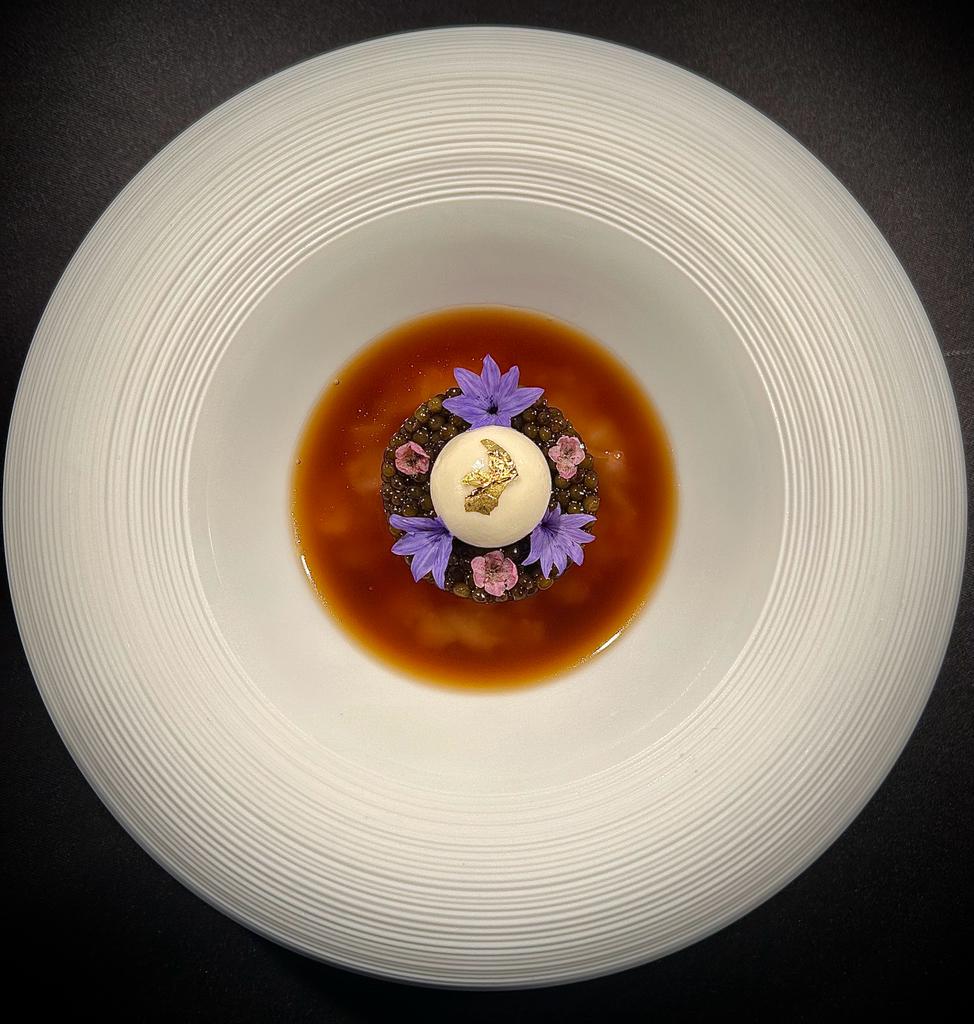
At Sommer Dining, Chef Lewis Barker is serving his new dish – sweet botan ebi from Toyama Bay in Japan with delicate crustacean jelly, crowned with fennel bavarois and N25 Kaluga Reserve Caviar. Barker says, “I enjoy using the Kaluga reserve for its flavour and texture. The salinity isn’t too high and the finish on the palate is wonderfully creamy.”
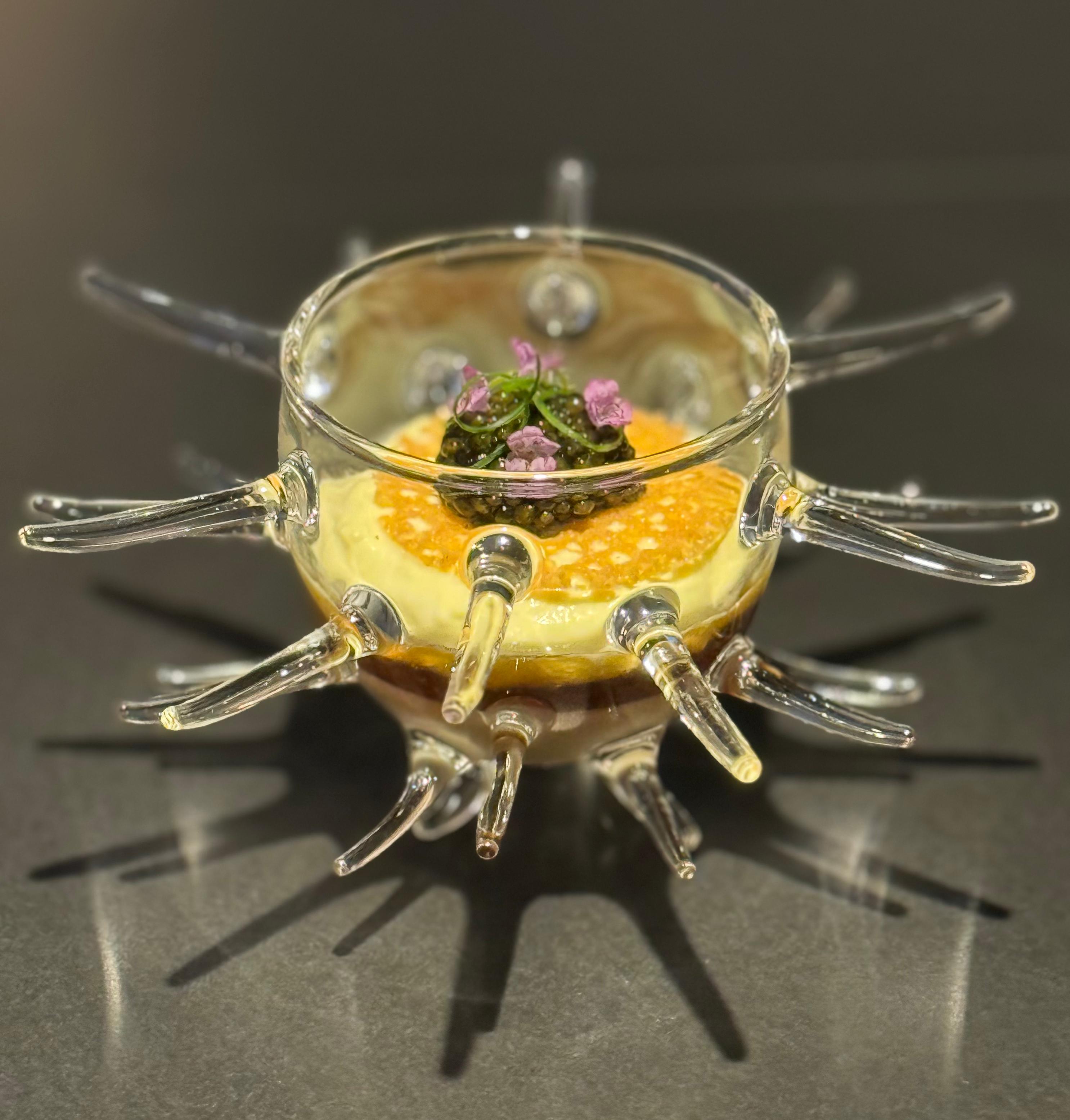
Finally, for this festive season (Christmas Eve, Christmas Day, New Year’s Eve and Day) Euphoria will be rolling out a special caviar dish. Seaweed Royale crustacean gelee is layered with sea urchin with lemon oil, balsamic, chive, and then topped with sweet corn cold emulsion and crispy chicken tuile. And finally crowned with smoked Oscietra prestige caviar.
Text by: Arista Kwek and Amy Van
Main image: Unsplash Tyler Nix
